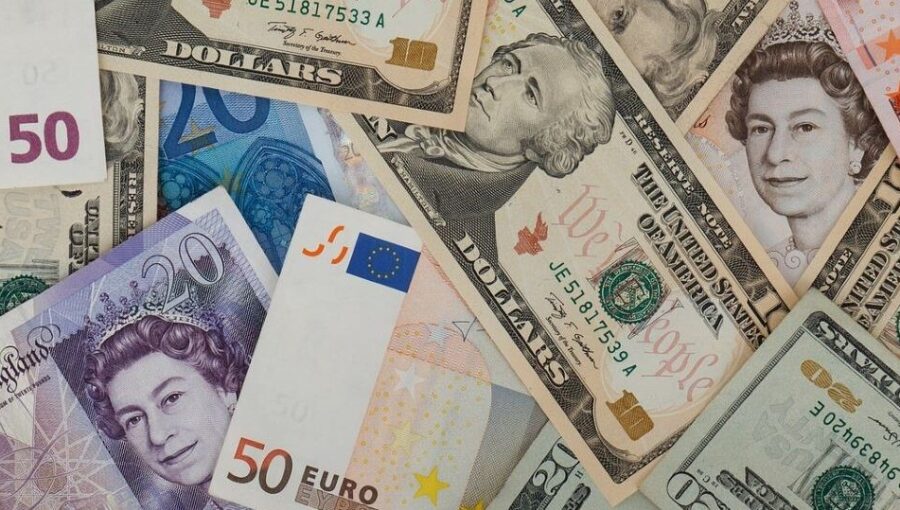Several currencies from the Gulf region make the list.
In an interconnected world, certain currencies are known to consistently stand out as beacons of strength and stability. Their value is not just a number, but a reflection of robust economies, strong fiscal policies, significant natural resources, and strong trade relationships.
But what makes some currencies stronger than others? Currency strength is typically determined by exchange rates, highlighting one currency’s position relative to other major standing currencies. Globally, this is often done against the US dollar. In general terms, factors like political stability and economic activity are key indicators of a strong currency.
Top 10 largest economies in the world in 2025
Here’s an overview of the strongest currencies today, pegged to the U.S. dollar:
1. Kuwaiti Dinar (KWD)
Currency peg: KWD 1 = USD 3.27
The Kuwaiti dinar was first introduced in the 1960s and has had a long-standing history of being one of the strongest and most stable currencies worldwide, having an exchange rate higher than most countries. The abundance of energy reserves in the country is a major reason for the success of the Kuwaiti dinar.
2. Bahraini Dinar (BHD)
Currency peg: BHD 1 = USD 2.65
Bahrain introduced the dinar in 1965. It replaced the Gulf Rupee, a currency used in the Arab states earlier. Similar to Kuwait, energy reserves give the Bahraini dinar a significant boost. The small sizes of the two countries also have an effect on their economic activity. Before adopting the dirham in 1973, many UAE emirates used various different currencies, like the brief use of the Bahraini dinar by Abu Dhabi.
3. Omani Riyal (OMR)
Currency peg: OMR 1 = USD 2.60
The Omani riyal is Oman’s official currency and was first brought into circulation in the 1970s. Like many other present-day GCC countries, the nation previously used the Gulf Rupee. Continuing the trend of oil-dependent economies, Oman’s strengthening currency is a reflection of a strong oil and gas sector.
4. Jordanian Dinar (JOD)
Currency peg: 1 JOD = USD 1.41
The official currency of Jordan is the Jordanian dinar, which was officially inaugurated in 1950. Today the currency is used in Jordan, alongside some use in the West Bank. Prior to this shift, Jordan used the Palestine pound as directed under British mandate. Unlike the neighboring Middle Eastern countries, Jordan’s economy is largely centered on the service industry, making it the country’s biggest economic contributor.
5. British Pound (GBP)
Currency peg: GBP 1 = USD 1.36
The British pound sterling is the oldest currency still in circulation today. Dating back to the 17th century, the pound is used in the United Kingdom, as well as in some of the present-day British territories. London’s presence as a prominent global financial center also plays a role in boosting the pound sterling.
6. Gibraltar Pound (GIP)
Currency peg: GIP 1 = USD 1.35
Gibraltar is a small overseas British territory in the Mediterranean at the southern border of Spain. Despite being a territory the country utilizes its own unique currency, the Gibraltar pound. This was created in the 1920s. The currency was largely created to give Gibraltar some autonomy over its economy, while still holding a strong connection the powerful British pound sterling. The currency is only accepted for use within Gibraltar.
7. Cayman Islands Dollar (KYD)
Currency peg: KYD 1 = USD 1.20
The Cayman Islands, another British territory, have also established their own currency in 1972. Although the official currency is the Cayman Islands dollar, the U.S. dollar is also widely used. This can be attributed to the large tourism sector of the Cayman Islands, which often gets many visitors from the United States. However, the Cayman Island dollar is only used in the territory.
8. Swiss Franc (CHF)
Currency peg: CHF 1 = USD 1.22
The Swiss Franc is the official currency of Switzerland and Liechtenstein, a small European nation on Switzerland’s eastern border. It was first adopted in the 1850s by Switzerland, and in 1920 by Liechtenstein. This was made possible as the two countries are in a currency union.
9. Euro (EUR)
Currency peg: EUR 1 = USD 1.14
The euro was first introduced in 1999, aimed at easing and promoting economic activity within the European Union. Out of the 27 EU members, the following seven nations do not use the euro as their official currency: Bulgaria, Denmark, Hungary, Poland, Czech Republic, Romania, and Sweden.
10. U.S. Dollar (USD)
Currency peg: USD 1 = USD 1
One of the key players of currency pegging, the US dollar is widely used for this purpose thanks to its long-standing stability. Although the value of the American dollar may not be as high as other currencies mentioned on this list, its widespread global use makes it one of the most powerful currencies worldwide.
Ranking of UAE dirham
In a policy initiating in 1997, the UAE dirham has a fixed pegged to the US dollar at a rate of 1 dirham equaling 0.27 US dollars.
Mariam Khan is a trainee journalist at Gulf News.


